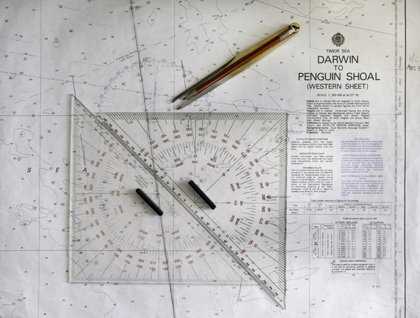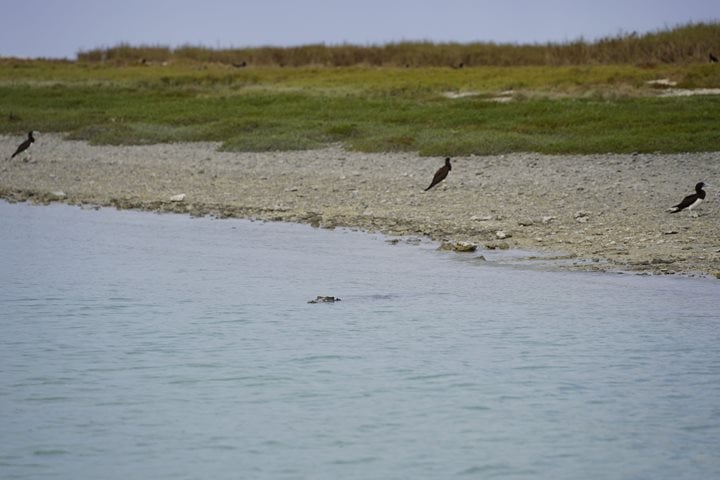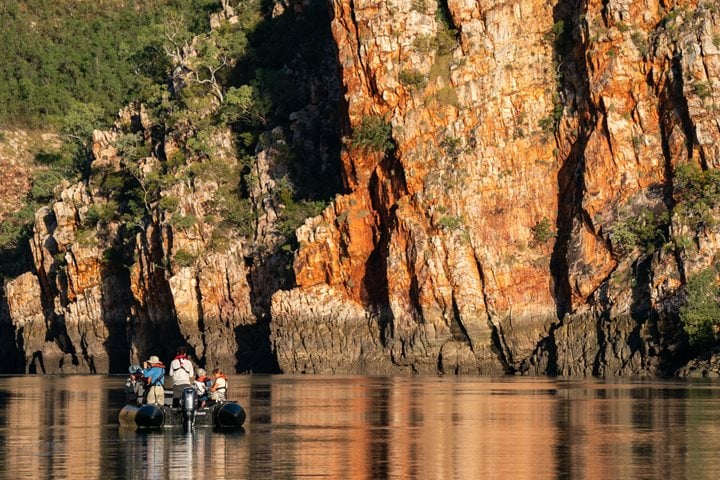The Timor Sea is the eastern gateway to the Indian Ocean, the wide waters that open to the west. Today our ship moves gently as we cross this smaller sea and in this motion we can already begin to feel the great rhythms of the Kimberley. The beautiful desert coast of this region of Australia was carved from ancient rocks into its current magnificent cliffs, headlands and canyons by the action of the highest tides in the world, tides that are rising and falling beneath our feet even now. These great surges of water sweep in out of the Indian Ocean into the Timor Sea where they are constricted between the Australian mainland and the islands of Indonesia to the north, and at the same time they are lifted as they approach the shallower waters in the east, focusing them into the gigantic rises and falls of the ocean that flood and drain the Kimberley’s coast twice each day.
A pleasant day at sea under bright blue skies has given the opportunity to settle into life on the National Geographic Orion, enjoying delicious meals, catching up on a bit of rest and preparing for the adventures ahead. Naturalist Cristiana Damiano gave a presentation, illustrated with beautiful images, introducing us to all the wonders of the Kimberley, and National Geographic Photographer Ira Block offered us more advice on capturing our own beautiful shots in the days to come. In the afternoon naturalist Mark Watson offered insights into a much more ancient form of expression, the incredible rock art of the Kimberley region, and our day concluded with a cocktail party hosted by Captain Mark Taylor.
The Kimberley weaves together many rhythms of time and landscape. It is a meeting place of the very ancient and the very young, the desert and the sea, humans and the wild world. We can feel it, not far ahead, waiting to welcome us.







